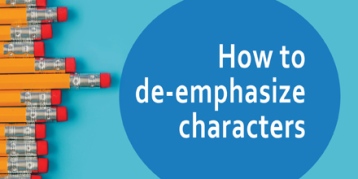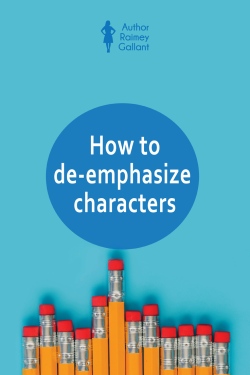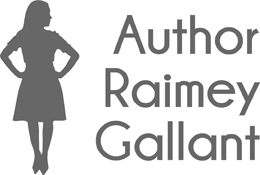
THE FOLLOWING CONVERSATION, WHICH IS BASED ON A REAL EMAIL EXCHANGE WITH MY AGENT, HAS BEEN SET IN A 1920’S HARD-BOILED DETECTIVE NOVEL FOR DRAMATIC PURPOSES.

So I pick up the telephone and wouldn’tcha know—it’s my agent. “Too many characters in your manuscript,” she says to me.
So I says to my agent, I says, “Well, golly. What do I do?”
“Kill two of ’em. Kill two of ’em dead.”
Course, I know my agent isn’t suggesting I put a hit out on my characters, but—ha!—wouldn’t it be a laugh if she was. “Suppose we edit out this one dame,” I says to her (I didn’t much like that character anyway), “but instead of killing this other fella, suppose we de-emphasize him. I can cut back his description, and hey, I can un-name him, too. That way, the amount of words devoted to him is more proportional-like, as far as his role in the story goes.”
“That sounds like berries to me!”
“Says you,” I says to her, and I says it with a scowl.
“Don’t be a wet rag. Berries means your idea is good.”
“I got another one.”
“Tell me, will ya?”
“How ’bout I de-emphasize and un-name a few more of my smaller characters, so as to signal to readers that those characters are inconsequential when it comes to solving the mystery? That way, readers won’t have to remember as many names.”
“Well, say, you’re plumb full of good ideas.”
“What’s with all the talk about fruit?”

Bad jokes about berries and plums aside, below is a list of ways you can de-emphasize or delete some of the smaller characters in your manuscript. Do you have to do this? Not at all. It’s particularly useful if A—you have a lot of characters, which can make it taxing for readers memory-wise; or B—like me, you’re writing in the crime genre, in which case, your readers are doing their very best to keep up with your foreshadowing and clues, also taxing memory-wise; or C—also like me, your agent has quite reasonably suggested your manuscript could stand to lose ten or so thousand words, and she’d be right. Do you have to do all of these things for each character you want to remove emphasis from? Again, not at all.
 1. Un-name a character: This doesn’t mean they don’t have a name, just that your POV character never knew it, can’t remember it, or doesn’t mention it. “My first college roommate smelled vaguely combustible.” Your POV character could be doing or thinking about something else while introductions are happening and miss them. You could do a little telling to skip right over names: “While Simone made the introductions, I downed glass three of wine.”
1. Un-name a character: This doesn’t mean they don’t have a name, just that your POV character never knew it, can’t remember it, or doesn’t mention it. “My first college roommate smelled vaguely combustible.” Your POV character could be doing or thinking about something else while introductions are happening and miss them. You could do a little telling to skip right over names: “While Simone made the introductions, I downed glass three of wine.”
2. Cut a character’s airtime: Ask yourself, is my description of the character proportionate to their role? Do they need that much dialogue? Have I given readers the false impression that this character will appear again later in the story?
3. Cut back (or cut completely) characters whose purpose is redundant: If there are two characters who are in your story for essentially the same purpose, consider cutting one and giving their actions/dialogue to the remaining character. In one of my books, I had a burn patient’s fiancé and mother both answering my protagonist reporter’s questions, so I instead I gave the mother all the dialogue, including a mention of the fiancé being overseas and trying to catch a flight home.
4. Cut the whole character: Do your readers need a play-by-play of your character being led to their table by the maître d’, or could you just jump, perhaps with a bit of narrative summary or maybe a scene break, to a more interesting spot? “I had never seen so many frogs’ legs in my life.”
This post is part of the #AuthorToolboxBlogHop. So many great blogs to keep hopping through. Click here to join the hop and to see what other writing tips you can glean from this month’s edition.
Have you de-emphasized or un-named a smaller character before? Am I missing ways this can be accomplished? Share your thoughts in the comments.
Thank you to Freepik for the pencils image I used in this post.


Ha! I do love the ol’ hardboiled talk. Reminds me of one of my favorite SNL sketches between Jon Lovitz and Philip Hartman, where one’s a movie producer and the other a star during WWII. They do whip this kind of dialogue back and forth between each other like it’s nothing. LOVE it. I can’t find the polished sketch, but if you watch his audition for SNL he and Lovitz do some stuff at the end.
LikeLiked by 2 people
Thanks for sending that!
LikeLiked by 1 person
Another great original post – well dome Raimey 🙂
LikeLiked by 2 people
First time ever I didn’t have the post ready weeks ago. Was up late writing it, so I’m glad you like it. 🙂
LikeLike
Good advice. Your tips are the bee’s knees.
LikeLiked by 2 people
No, you’re the bee’s knees, Darnell! 🙂
LikeLiked by 1 person
“bees knees” <– ha! I had to look that one up! But, I agree! Bee's Knees and all!
LikeLiked by 1 person
Those are really good suggestions. The only one I’m pretty familiar with is ‘don’t name them’. I constantly get complaints about too many characters. Sigh.
LikeLiked by 2 people
Double sigh. 🙂
LikeLiked by 1 person
This post is absolutely peachy! Well done.
These are very practical and helpful tips to help cut down characters to put them more in the background.
Kill off characters, says your publisher, eh? Sounds a bit too fruity to me.
Hahahaha. 🙂
LikeLiked by 1 person
Lol. 🙂
LikeLiked by 1 person
What a creative way to get the point across. I enjoyed that.
LikeLiked by 1 person
I hemmed and hawed about posting the scene part of the post; closed my eyes when I hit publish. 🙂
LikeLiked by 1 person
Funny! Or should I say berries?
I’ve skipped naming characters. If you only meet them once, why force the reader to remember their name?
LikeLiked by 1 person
Such a good lesson for me to learn.
LikeLike
Great advice! I am always telling authors to cut unnecessary characters. This seems like a less harsh alternative
LikeLiked by 1 person
I know, right? *dusts shoulders* 😉
LikeLiked by 1 person
I could have used this advice when I was writing the first draft of my novel! As a new author of historical fiction (and paranormal) I feel the need to make everyone mean something. Got this in time for Draft Two though – thanks Raimey!
LikeLiked by 1 person
Awesome. You can do it!
LikeLike
Reblogged this on Kerry A Waight and commented:
Some excellent advice here from crime writer Raimey Gallant
LikeLiked by 1 person
Hugs!
LikeLike
I’m starting a new series and am having the problem of too many characters, but most of are needed to be red herring suspects to the main murder. Hmmm.
LikeLiked by 1 person
You’re not alone with this conundrum. Readers today are able to guess from past plot patterns who the villain is, and adding more red herrings/suspects is a viable way to keep them guessing.
LikeLike
#3 is probably my favorite, though I tend to think of it as combining characters (I may be a bit of a softy).
As with so many aspects of writing, there’s definitely something to be said for “Can I do it with less?” At the end of the day, every additional word, character, or plot thread, is additional work audiences need to perform to experience the story, so it definitely pays to streamline. And having a lesser character in one story can often be used as the foundation for a sequel or spinoff.
LikeLiked by 1 person
Combining characters is definitely a nicer way to look at it!
LikeLiked by 1 person
I used to have a thing about writing redundant characters, I seem to do it without realising. Now, I have to make a conscious effort to scale down the amount of sub characters I add, or combine 2 into one.
Great post!
LikeLiked by 1 person
Why thank you. 🙂
LikeLiked by 1 person
This!
I always need to cut characters. The idea of unnaming them appeals to me. I will definitely try this next time.
Thanks for a great post.
LikeLiked by 1 person
I’m always happy if I’ve managed to help another author. 🙂
LikeLike
Great tips 🙂
I cut a couple of characters from my WIP as they had no use to the plot: It was a tricky choice as my story’s based on Arthurian legends where there are lots of characters! I keep telling myself if I ever write a sequel I might use them, to ease the pain of cutting them out ^^” It’s necessary sometimes though, and it drives me nuts when I hear the life story of a character only for them to die in the next scene, with none of their backstory being relevant!
LikeLiked by 1 person
My deleted characters haunt my dreams. 😉
LikeLiked by 1 person
Great points, especially for the mundane/redundant characters. 🙂
LikeLiked by 1 person
Thanks so much, Kevin. 🙂
LikeLiked by 1 person
You’re most welcome. 🙂
LikeLiked by 1 person
Love it! I think I’m going to un-name a couple of characters…
LikeLiked by 1 person
You go un-name the crap out of them! 😉
LikeLiked by 1 person
Sound advice. I don’t keep a lot of characters because as a reader I know it’s hard for me to keep up with everyone. Simple is best with the right balance so your characters world is full and not ‘just them’ but not too much that we learn the entire back history of the gas station worker.
LikeLiked by 1 person
It sounds like you know instinctively what I had to learn the hard way. 🙂
LikeLiked by 1 person
Great suggestions. I’ve even split characters into pieces and divvied up traits, rolls, etc. to other characters to streamline one of my shorts. 🙂
Anna from elements of emaginette
LikeLiked by 1 person
Waste not, want not.
LikeLiked by 1 person
Sometimes I’m hesitant on giving a minor character a name. Not only do I take forever coming up with a name, but often, I feel like I have to start expanding on their story as well. Un-naming a character is a great tip (or compromise) for killing them.
LikeLiked by 1 person
I usually end up down some rabbit hole of the Internet every time I need to name a character.
LikeLike
Great stuff – thank you, Raimey. I hadn’t thought of unnaming before, and I like that. I can see how, in crime fiction, in some ways more characters could give you more possibilities for red herrings. But then they’d end up diluted, I suppose. Thanks for the advice!
LikeLiked by 1 person
It’s a tough call for crime fiction for sure. Red herring characters: good; too many characters: bad.
LikeLike
Oh, what a balancing act! I write mysteries as well and it’s hard to get rid of inconsequential characters as I want my readers to be thinking anyone could have done it! But yeah, too many is too difficult. Yikes!
LikeLiked by 1 person
You and me both, sister.
LikeLiked by 1 person
Hey, Sista, I like your style. Such a creative way to make your point. If I have 3 characters in a conversation, that’s one too many for me. !!! I like to read books with a small cast of characters, so I guess I prefer to keep the number down when I write or I get confused!! LOL
JQ Rose
LikeLiked by 1 person
I wish I’d had your mindset when I started writing; it would have saved time!
LikeLike
Oh these are CLEVER! I actually have the opposite problem in my story at the moment–I don’t have enough characters! But I love this list and will definitely bookmark it for future reference 🙂 Thanks for sharing!
mizwriterlady
LikeLiked by 1 person
Thanks, Jean!
LikeLike
Great advice! I have a character I may need to un-name in this latest scene I’ve written. I want to keep her because she’s the first person Landon has met since entering town…and she’s really helpful, evening mentioning the sympathy of the MC Landon is about to meet, kinda giving him some foreshadow into what he’s about to get himself into. Hmm, will need to rethink this.
LikeLiked by 1 person
I’m sure you’ll come up with a solution. 🙂
LikeLike
Good advice! Was it fun to spend a few days considering how to get rid of people? 🙂
LikeLiked by 1 person
Is it wrong if that’s one of my favorite things about writing crime fic? 😉
LikeLike
I find myself caught in this problem all the time. I name too many characters and some of them deserve no name! Second drafts involve a lot of killing off of characters.
Susan Says
LikeLiked by 1 person
Haha. 🙂
LikeLike
“Do your readers need a play-by-play of your character being led to their table by the maître d’, or could you just jump, perhaps with a bit of narrative summary or maybe a scene break, to a more interesting spot?”
Amen – My characters talk too much. On purpose. BUT – Economy. Talk to get what is needed, narrative summary to get to next. I recently read David Levien’s “Thirteen Million Dollar Pop.” Seiously economical. Almost TOO much. But spot on. It was the main character, what he did. Who he kew, even his personal life got backburnered. A dinner party was cut short of even John D MacDonald treatment, handled very smoothly. Yes, some of the dialogue, though praised, was too much of a stretch in places and in others it could have used some elbow grease, particularly in the protagonist’s head time. Say he’s Welsh, move on. Nobody wants to bounce from Midwest to Irvine Welsh with a page turn. But yeah. good thoughts. Unless you’re writing an ensemble piece, and even then, drop the descriptions to 5, 6 words that work. Or 3 if they’re good. He was soft. Pink, rubbery and dripping in a size too small black Speedo. Tall and gawky in sensible flats and a Fifties TV mom hairdo.
Go somewhere public and nail the people you encounter in 5 words or less until you can see them in your head and self edit them down to all they need.
Good advice for us all. Thanks!
LikeLiked by 1 person
Great advice, Raimey (and the kind of quirky, hands-on agent I love)!
LikeLiked by 1 person
Thanks! The email exchange was nothing like my dramatized version. 🙂
LikeLiked by 1 person
Great post, Raimey. I loved your suggestions and especially “My first college roommate smelled vaguely combustible.”
LikeLiked by 1 person
Thanks! As soon as I thought of it, I almost put it aside to later use it in a story, but I’ve got notes on my phone filled with lines I never come back to, despite my good intentions, lol. 🙂
LikeLiked by 1 person
Excellent advice. Authors don’t always listen to tried-and-true advice from editors and publishing advisors. Thanks for helping us out. bowmaneditor @outlook.com
LikeLiked by 1 person
It’s my pleasure. 🙂 Thanks for stopping by.
LikeLiked by 1 person
I must return more often…
LikeLike
Some great advice, Raimey!
Thanks for sharing.
P.S. Congrats on being a finalist for the award. Awesome!
LikeLiked by 1 person
Thank you! I still can’t believe it. 🙂
LikeLike
I think this is good advice (even if I’m totally guilty of too many characters 😉 ) Great post!
LikeLiked by 1 person
Why thank you. 🙂
LikeLike
I really enjoyed this post. Yes,too many characters can get confusing for the reader, or even weigh down the story. Thanks for sharing and thanks for the reminder of carefully considering each character in a novel.
LikeLiked by 1 person
I’m so happy you found this post helpful. 🙂
LikeLike
Redundant is key. I’ve been told so many times. Trust me, you don’t want to know. Love the hard boiled detective novel. 🙂
LikeLiked by 1 person
Ha! And thanks!
LikeLike
THanks for the tip!
LikeLiked by 1 person
My pleasure!
LikeLiked by 1 person